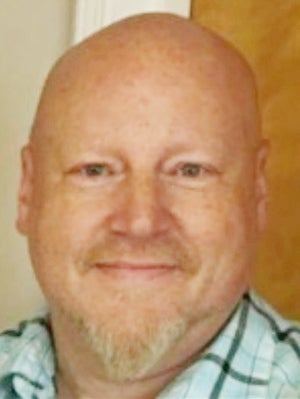Mind and Body: View the solar eclipse safely
Published 9:00 am Monday, August 14, 2017
By Jim Cowan
Clark County Health Environmentalist
Should the heavens cooperate, a rare celestial event will take place mid-afternoon, on Monday, Aug. 21. The midday sun will be blackened from the sky to the extent that, in some places like western Kentucky, night will appear to fall across the land. This of course will be a total solar eclipse that will trace a path across the United States from Oregon to South Carolina, as the earth rotates. And the greatest period of darkness (about 2 minutes, 41 seconds) will occur in Christian County in western Kentucky.
Solar eclipses take place when the moon lines up between the sun and the earth casting its shadow onto the surface of the earth. Only those people covered by the moon’s shadow can witness this event.
This, of course, is not to be confused with a lunar eclipse in which the moon passes behind the earth and becomes covered with its shadow. Anyone on the night-time side of the earth, with a clear sky, can observe a lunar eclipse.
Different versions of a solar eclipse can occur as a result of the moon’s distance from the earth and the location of the person observing it on the earth.
A partial solar eclipse will be seen when, as the name suggests, the moon covers only part of the sun as it moves in front of it. Of course, the light from the sun will diminish proportionately depending upon how much of the sun is covered. The solar disk will appear as a crescent like a cookie with a bite taken out of it. (No wonder some of the ancients thought monsters were eating the sun.) This is what most of the country will witness on Aug. 21.
When the moon passes completely in front of the sun, two other types of solar eclipses may occur, an annular solar eclipse (annular meaning ring-shaped) or a total solar eclipse.
An annular solar eclipse takes place when the moon is slightly farther from earth than on average, making the size of the lunar disk slightly smaller than the size of the solar disk, as seen from earth. Therefore, it does not completely cover the entire sun, and a thin ring of the sun’s outer surface is visible during the maximum point of the eclipse.
During a total solar eclipse, the moon is close enough to the earth that its entire lunar disk will block out the entire solar disk and none of the sun’s surface light will be visible. It is during this time that larger stars and planets may be visible, the air temperature may drop significantly enough to cause an unusual wind to stir, and nocturnal animals may venture forth, while day-time creatures prepare for sleep.
Because the sun’s corona, or outer atmosphere, will be visible during totality, the eclipse will give the appearance of a glowing halo around a black hole in the sky. This is the extraordinary event that thousands (think Kentucky Derby) of people will travel to Western Kentucky to see.
Though Clark County will not fall under the path of totality, we will witness the moon covering about 95 percent of the sun and giving the effect of late dusk in the middle of the day. And should the skies cooperate and be clear, the reduced sunlight passing through the small spaces between tree leaves will produce images of a multitude of crescent suns on the ground.
Whether, partial, annular, or total, the experience of nightfall in the middle of the day is so incredible, that everyone should try to witness it. But depending upon how we do that, our eyes could pay a price with permanent damage.
Normally, if we glance at the sun, the risk of damage to our eyes is minimal because the intensity of the light is so great that it is too uncomfortable to look for very long. However, due to the diminished sunlight during an eclipse, curious observers may feel safe looking skyward without eye protection. And since the damage may not be immediately evident, many will be unaware of the harm they are doing to their eyes
But according to Dick Land of the Schepens Eye Research Institute, even the reduced sunlight can harm the eyes. “Danger to the eye is from heat (infrared radiation), UV (ultraviolet radiation), and from excessive blue light.” And he adds that “young eyes are most at risk during the partial eclipse, (because) their lens and media (fluid within the eye) is most clear, and the temptation to stare (is) great.” (http://web.williams.edu/Astronomy/IAU_eclipses/look_eclipse.html)
According to an online article by the National Aeronautics and Space Foundation (NASA), titled “How to View the 2017 Solar Eclipse Safely,” “The only safe way to look directly at the uneclipsed or partially eclipsed sun is through special-purpose solar filters, such as ‘eclipse glasses’ or hand-held solar viewers.” (https://eclipse2017.nasa.gov/safety)
The Perkins Observatory website (http://perkins.owu.edu/solar_viewing_safety.htm) lists several do’s and do not’s for “Eclipse Safety.” They are as follows.
Do:
— Use specially made eclipse viewing glasses.
— Observe the eclipse with a pinhole viewing box. (http://perkins.owu.edu/documents/education/pinhole.pdf)
— Use number 14 welder’s glass
— Use onl;y solar filters specifically designed for viewing the sun.
— Let your children see this spectacular event!
Don’t:
— Put on the eclipse glass and then look through binoculars or a telescope.
— Try observing the eclipse by looking through home-made filters of any kind! This includes (but is not limited to) pop-tart wrappers, CD’s, exposed film, smoked glass, Mylar balloons, or old x-ray photos. These methods are unsafe.
— Try stacking pieces of welder’s glass so they add up to 14 (the rating scale is not linear) Two pieces of number 7 glass do not give the same protection as a piece of number 14!
— Use any sort of item as a solar filter if it was not specifically designed for that use!
For additional information, visit the following websites: https://eclipse.aas.org/ and https://eclipse2017.nasa.gov/ or contact Cowan at 859-385-4453 or jamesm.cowan@ky.gov.




